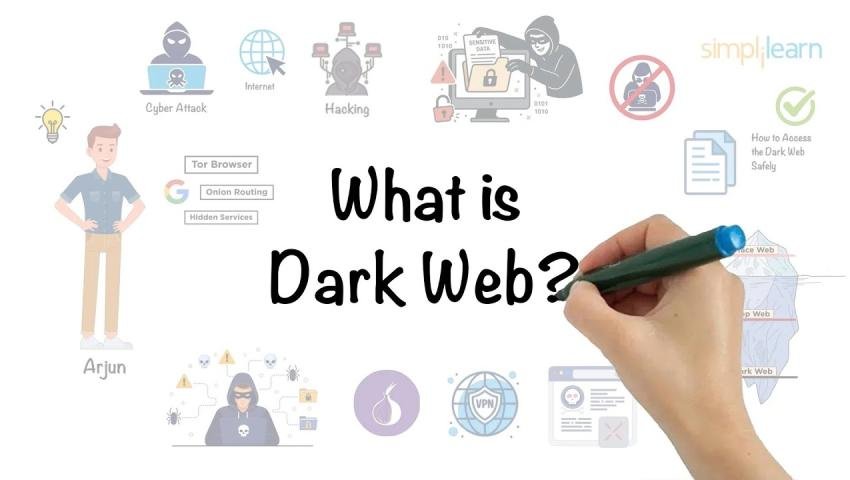
The Dark Web Explained: Myths, Facts, and Safety Tips
The Dark Web is one of the most misunderstood parts of the internet — a place wrapped in mystery, fear, and fascination. While many associate it with hackers and crime, the truth is more nuanced. In this guide, we’ll break down what the dark web really is, debunk common myths, and share safety tips if you ever need to access it for legitimate reasons.
🌐 1. The Internet Has Layers
Think of the internet like an iceberg:
- Surface Web — The visible part indexed by search engines (e.g., Google, Bing).
Examples: YouTube, Wikipedia, news sites. - Deep Web — Everything behind logins or not indexed.
Examples: emails, online banking, academic databases, company intranets. - Dark Web — A small, intentionally hidden portion of the internet, accessible only through special software like Tor (The Onion Router).
👉 The Dark Web = Part of the Deep Web, but not all of the Deep Web is dark.
🧩 2. What Is the Dark Web Really?
The dark web consists of websites that use encryption and anonymity networks to hide their locations and user identities.
These websites typically have domains ending in “.onion” and are not accessible through normal browsers.
How It Works
- Users connect via Tor Browser, which routes traffic through multiple encrypted layers (nodes).
- Each relay hides the IP address of the previous one, making tracking extremely difficult.
- Sites and users remain anonymous — this can be used for both privacy and criminal purposes.
⚖️ 3. Legal vs. Illegal Use
Contrary to popular belief, the dark web itself is not illegal.
It’s a technology built to provide anonymity — how it’s used determines legality.
✅ Legal Uses
- Journalists protecting sources (e.g., SecureDrop platforms).
- Whistleblowers communicating safely.
- Activists in oppressive regimes accessing uncensored news.
- Privacy researchers and cybersecurity experts monitoring threat activity.
🚫 Illegal Uses
- Selling stolen data, drugs, or weapons.
- Identity theft and credit card fraud.
- Hacking services or exploit markets.
- Child exploitation and other serious crimes.
Law enforcement agencies like the FBI, Europol, and Interpol actively monitor and take down criminal operations — including major darknet marketplaces (e.g., Silk Road, AlphaBay, Genesis Market).
🧠 4. Common Myths About the Dark Web
❌ Myth 1: Everything on the Dark Web is illegal
Truth: Only a small portion hosts illegal content. Many use it legitimately for privacy and free speech.
❌ Myth 2: The Dark Web and Deep Web are the same
Truth: The deep web includes all non-indexed content (like your email inbox). The dark web is just one encrypted subsection.
❌ Myth 3: Tor is unsafe or automatically illegal
Truth: Tor itself is legal and open-source. Many organizations use it to enhance security and anonymity.
❌ Myth 4: You’ll get hacked instantly
Truth: Visiting the dark web isn’t inherently dangerous, but careless browsing or downloading unknown files can lead to malware or scams.
❌ Myth 5: Law enforcement can’t access the dark web
Truth: They can and do — through undercover operations, forensic tracking, and network infiltration.
🔍 5. Why Cybersecurity Experts Study the Dark Web
Security professionals monitor the dark web to:
- Detect data breaches and stolen credentials.
- Track new malware and exploit kits.
- Identify emerging cybercrime trends.
- Protect brands and organizations from identity theft.
For example, cybersecurity firms often scan dark web forums for leaked company data or compromised passwords.
🛡️ 6. Safety Tips for Exploring the Dark Web
If you ever access the dark web for research or educational purposes, follow strict safety practices:
✅ Do:
- Use the official Tor Browser (from torproject.org ).
- Enable a trusted VPN before launching Tor to hide your ISP traffic.
- Use HTTPS-only connections whenever possible.
- Keep your system updated — especially your browser and OS.
- Use a virtual machine or isolated environment for extra protection.
- Cover your webcam and disable scripts/extensions.
- Be cautious with links — dark web URLs are not verified, and many lead to scams or malware.
- Log out and shut down Tor completely after each session.
🚫 Don’t:
- Download or share files from unverified sources.
- Give out personal details or use real names/emails.
- Enable macros or allow downloads from unknown sites.
- Access illegal content — possession or viewing may itself be a crime.
🧱 7. How to Identify Dangerous Dark Web Sites
- Strange URLs: Random strings (e.g.,
abcd123xyz.onion). - No encryption: If it doesn’t use HTTPS within Tor, it’s insecure.
- Fake marketplaces: Many clone well-known darknet markets to steal crypto.
- Requests for personal data: Legit dark web forums don’t ask for real-world info.
- No trust level or reputation system: Avoid new or unverified vendors/forums.
🔐 8. Tools That Help Stay Safe
- Tor Browser – Official anonymous access.
- ProtonVPN / NordVPN / Mullvad – Trusted VPNs for extra privacy.
- Whonix / Tails OS – Secure, privacy-focused operating systems.
- Have I Been Pwned – Check if your email or password appears in leaked data.
- Dark web monitoring services – Many cybersecurity platforms offer alerts for leaked company credentials.
⚠️ 9. Risks to Be Aware Of
Even legal browsing carries risks:
- Malware infections (from downloads or drive-by scripts).
- Scams and phishing disguised as “security services.”
- Surveillance by criminals or authorities monitoring traffic patterns.
- Exposure to disturbing or illegal content — avoid curiosity clicks.
Always keep your identity and device isolated from any personal data or accounts.
💡 10. Final Thoughts
The dark web is not a single “evil” place — it’s a technology built on privacy and anonymity, misused by some but vital for others.
Understanding it is crucial for cybersecurity professionals, journalists, and privacy advocates alike.
If you choose to explore it, do it safely, legally, and with purpose — knowledge is power, but safety is non-negotiable.
✅ Key Takeaway:
The dark web is a tool — neutral by design. Whether it protects privacy or enables crime depends on who uses it and how.
Mrityunjay Singh
Leave a comment
Your email address will not be published. Required fields are marked *

